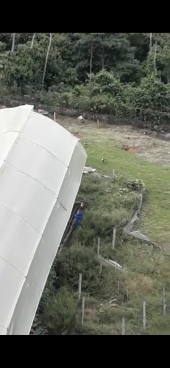








Sometimes the answer is nothing

 1
1








"Where will you drive your own picket stake? Where will you choose to make your stand? Give me a threshold, a specific point at which you will finally stop running, at which you will finally fight back." (Derrick Jensen)




Idle dreamer




Best luck: satisfaction
Greatest curse, greed
 1
1






 1
1








Ernie Schmidt wrote:The reason one would construct a steep sided water retaining pond is to prevent loss of water due to evaporation. Especially run off ponds that don't have a consistent source of water such as a stream or spring. Large gentle sloped shallow bodies of water/ponds dry up very quickly during drought conditions. Steep sided ponds with the least water surface exposed to the air hold water longer. When I had my run off pond built years ago, the dozer operator understood that principle and I ended up with a long pond about 8 feet deep in the middle that had steep sides and sloped at either end. Much like the one in the pictures. It really ended up being the best of both worlds holding water and having a sloped shore line. It does lose several feet of water during the summer, but fills quickly and stays filled during the rainy weather.


 1
1





|
We kept yelling "heart attack" and he kept shaking his head. Charades was the tiny ad's idea.
Heat your home with the twigs that naturally fall of the trees in your yard
http://woodheat.net
|


